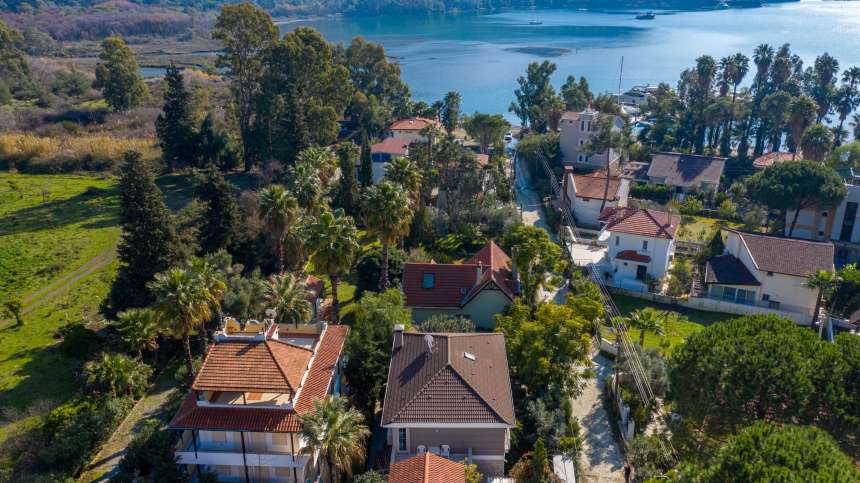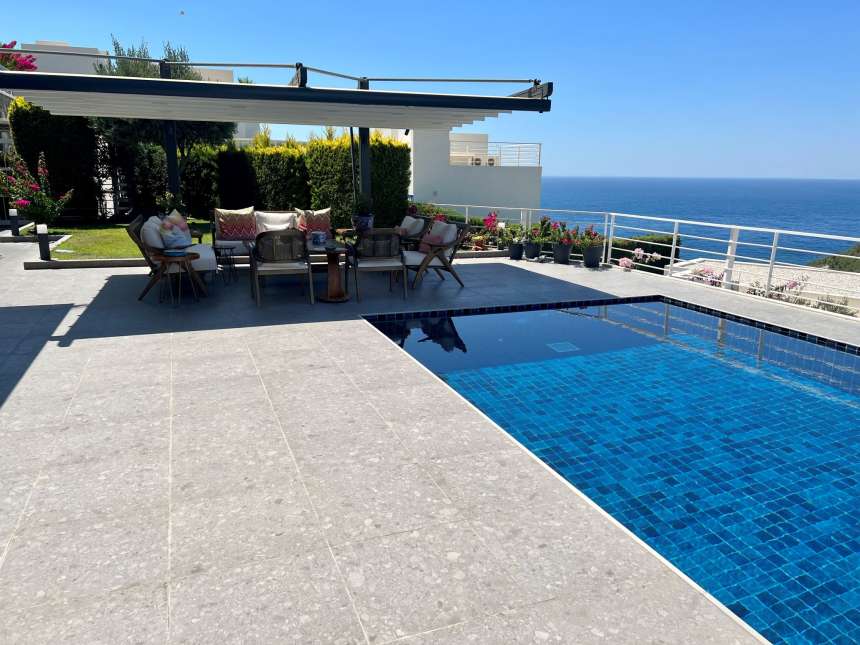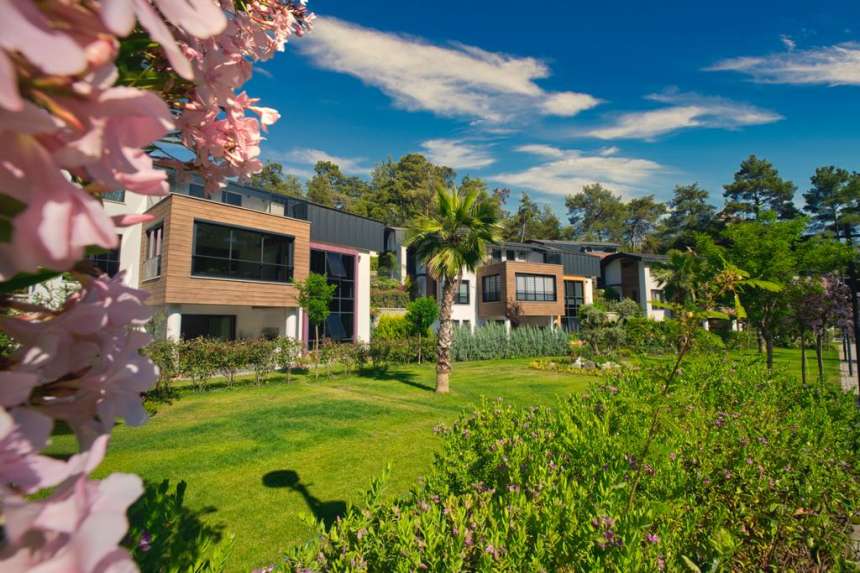About Turkey
1) The Oldest Human Settlement
Çatalhöyük was a very large Neolithic and Chalcolithic proto-city settlement in southern Anatolia, which existed from approximately 7500 BC to 5700 BC and is thought to be the oldest, largest and best preserved human settlement in the world. The area overlooks the Konya Plain and is situated south east of the modern day city of Konya. It is estimated that the average population was between five and seven thousand, possibly as high as ten thousand. The town was composed entirely of domestic buildings with inhabitants living in mud brick houses, most of which were accessible through a hole in the ceiling reached by ladders or stairs.

2) Noah’s Ark
Just a few years ago, a team of evangelical Christian explorers claimed that they had found the remains of Noah’s ark beneath the snow and volcanic debris on Turkey’s Mount Ararat. In 2008, the team claimed to have found seven large wooden compartments buried at 13,000 feet above sea level near the mountain’s peak. They discovered that the radiocarbon-dated wood shows that the ark is about 4,800 years old, which roughly coincides with the time of Noah’s flood as told in the Bible. Of course there are skeptics, however, although the Bible never specifies which peak the vessel supposedly landed on, it does say that the ark landed somewhere in Urartu, an ancient kingdom in eastern Turkey.
3) The Legend of Troy
Troy was located in Asia Minor, now northwest Anatolia in modern Turkey and is today known as Hisarlık. It is the setting of the Trojan War described in the Greek Epic Cycle and especially in the lliad, one of the two epic poems attributed to Homer. In Greek mythology, the Trojan War was waged against the city of Troy by the Achaeans after Paris of Troy took Helen from her husband Menelaus, king of Sparta. The famous story tells of the Achaeans building a huge wooden horse, posed as a gift to Troy which was used for soldiers to hide in and gain access to the city to find Helen. Troy became a world heritage site in 1998.

4) Santa Claus is Turkish
Saint Nicholas, also known as Nikolaos of Myra and was born in the city of Patara, a port on the Mediterranean Sea in present day Turkey. The modern city of Demre in the Antalya Province is built near the ruins of the saint’s home town of ancient Myra and attracts many Russian tourists as St. Nicholas is a very popular Orthodox saint. It is said that in Myra the relics of Saint Nicholas each year exuded a clear watery liquid which smells like rose water, canned manna, which is believed by the faithful to possess miraculous powers. Saint Nicholas is not the only saint with connections to Turkey. The Virgin Mary’s resting place is said to be near the ancient city of Ephesus and Saint Paul was from Tarsus in the south. Other biblical figures also hail from Turkey, such as the Prohpet Abraham who was born in Şanlıurfa and as mentioned above, Noah may have run his ark aground at Mount Ararat.
5) Turkey Created Coins
The world’s first coins were minted by King Alyattes in Sardis, Lydia, Asia Minor, which is present day Turkey, around 600 BC. The coins were made from a naturally occurring mixture of gold and silver called electrum. They were marked with a design on one side and with punches on the other. the earliest known hoard of electrum coins was found during the British Museum excavations of the Temple of Ephesus in 1904. 19 coins were found placed in a small pot which had been buried alongside another 74 coins in the foundations of the temple.
6) Mosques Galore
Turkey is home to 82,693 mosques, most of which are in the country’s largest city, Istanbul. Istanbul is home to 3,113 mosques and the lowest number can be found in the Tunceli Province which is home to only 117. But mosques are being built all of the time. In fact there was an increase of 7,324 between 2003 and 2013. Mosques are becoming more and more elaborate and intricate in their decoration, quite often adorned with mosaic tiling inside, lush carpets and stained glass windows.

7) Ancient Wonders
Two of the seven ancient wonders of the world are in Turkey. The Temple of Artemis at the famous ruins of Ephesus near Izmir is a popular draw for tourists in the area. It was first built during the Archaic period during the 8th century and later again during the Hellenistic period. The night that Alexander the Great was born in 356 BC, the temple was destroyed by a lunatic named Herostatus and the temple was again reconstructed by the citizens of Ephesus. The Mausoleum at Halicarnassus, known as the Tomb of Mausolus in Bodrum, the second of Turkey’s ancient wonders was built between 353 and 350 BC for Mausolus, a satrap of the Persian Empire and his sister-wife Artemisia II of Caria. It was approximately 45 metres high and the four sides were adorned with sculptural reliefs, each created by a different Greek sculptor. The tomb was destroyed by successive earthquakes from the 12th to the 15th century.

8) The First University in the World
The first known university in the world was founded in Harran, south east Turkey. Harran was a major ancient city in Upper Mesopotamia, close to the modern village of Altınbaşak in the Şanlıurfa Province. The city was a major commercial, cultural and religious centre first inhabited in the Early Bronze Age III. It is believed that the ancient city of Harran was home to the first university in the world and its ruins can still be seen.
9) Women’s Rights
Turkey was among the first countries in the world to give women the right to vote, even before the United States and the majority of European countries. On February the 6th 1935, the women of Turkey were allowed to vote in national elections for the first time and they were even allowed to stand for office. The reform was part of Atatürk’s efforts to secularise and modernise the new Republic of Turkey. A small percentage of parliamentary seats were set aside for women and today, about a tenth of the Turkish parliament is represented by women.

10) The First Man to Fly
Hezarfen Ahmet Celebi was a legendary Ottoman aviator of the 17th century and he was believed to have achieved sustained unpowered flight. Travel writer Evilya Çelebi wrote that he first practiced by flying over the pulpit of Okmeydanı with eagle wings but then flew from the very top of the Galata Tower in Istanbul (then Constantinople) and landed in the Doğancılar Square in Üsküdar on the other side of the Bosphorus River. Unfortunately he was seen to be some kind of magician and was sent to Algeria on exile where he later died.

11) Turkish Tulips
Most people associate Tulips with the Netherlands, or more specifically, Holland. But tulips were originally introduced to Europe by Turkey. It is a well kept secret, but the colourful flowers were first cultivated as early as 1000AD in Turkey and the bulbs only made their way into western Europe in the 17th century. Although there are currently 14 variations of tulips in Turkey, only four are considered to be of local origin, many of the other types hail from Central Asia and were brought into Turkey during the Seljuk Period. Istanbul is home to the International Istanbul Tulip Festival which is held at the beginning of each spring.
12) Turkeys
Historically the first European explorers to discover and eat turkey were those in Hernan Crtez’s expedition in Mexico in 1519. The delicacy had been brought back to Europe by Spanish Conquistadors and by 1524, had reached England. The bird was domesticated in England within a decade and by the turn of the century, it’s name had entered the English language. But the birds did not come directly from the New World to England, they originally came via merchant ships from the eastern Mediterranean Sea. Those merchants were called “Turkey merchants” as much of the area was part of the Turkish Empire at the time. Buyers in England thought that the birds came from the Turkish Empire and named them “Turkey birds”, soon shortened to “turkeys”. Funnily enough, the Turks called the birds “chicken of India”, believing that they came from India and today the Turkish word for turkey is “hindi”.

13) Moussaka
While Greece is often famed for its version of moussaka, the dish actually originated in Turkey and is served slightly differently from the Greek version. Turkish moussaka is not layered, instead it is prepared with sautéed eggplant, green peppers, tomatoes, onions and minced meat. Usually it is served with rice and yoghurt. In Turkey you can also find a few variants made with zucchini, carrots and potatoes.
14) Chicken Deserts
Chicken Breast Pudding, or Tavuk Göğiü as it is known in Turkey is an unusual blend of boiled chicken, milk and sugar, dusted with cinnamon. It became one of the most popular delicacies served to the Ottoman sultans at Topkapı Palace in Istanbul and today it is considered a signature dish of Turkey. Modern recipes pound the meat into a fine powder which is then mixed with the other ingredients, resulting in a thick pudding similar to the consistency of blancmange.

15) Ice Cream Performance Art
Ice cream called dondurma in Turkey is made with milk, sugar, salep and mastic and is believed to originate from the city and region of Maraş. It’s ingredients give the ice cream two qualities, a stretchy, chewy texture and resistance to melting. It is commonly sold from store fronts and street vendor’s carts where the mixture is churned regularly with long-handled paddles. But the sellers enjoy using the ice cream’s stretchy quality to perform circus like acts as they prepare it for their customers. Traditional dondurma sellers can be found dressed in a red Turkish costume and are often loud and entertaining to attract people to buy their fun snack.
16) The Oldest Sweets in the World
Everybody in the world has heard of Turkish Delight even if they haven’t tried it themselves. A confectionary based on a gel of starch and sugar and many varieties are made with chopped dates, pistachios and hazelnuts or walnuts bound by the gel. A large amount of flavours can be found and favourites include rosewater, mastic, Bergamot orange, lemon, cinnamon and mint. The sweets are covered in icing sugar, copra or powdered cream of tartar. Turkish Delight was supposedly created and developed by Bekir Efendi, known as Hacı Bekir. After performing the Hajj, he moved to Istanbul from his home town Kastamonu. His store can still be found in Istanbul and is one of the best places in the world to buy the popular Turkish confectionary.
17) Olive Oil
Turkey is one of the top producers of olive oil in the whole world and is home to over 80,000 olive trees. Olive oil is a staple of Turkish food, with many dishes being based on the addition of olive oil. Perhaps most interestingly though, the Turks even created a sport using the extracted oil. Oil wrestling is a national sport and one of the oldest in the world. The sport is really an art form and as a spectator it is more like watching a well choreographed dance. Originating in Edirne in north west Turkey, olive oil is smothered over the bodies of the competitors to make the competition more interesting as the slippery nature of the oil makes it more difficult to grab hold of each other.

18) Camels Wrestle Too
Men soaked in olive oil aren’t the only ones to provide a spectacle of wrestling for Turkish citizens and visitors, camels get in on the action too! The town of Selçuk near Izmir and very close to the ancient ruins of Ephesus, holds a camel wrestling event on the beach each year. Similarly to oil wrestling, the camels have moves to make and are classed according to the tactics they use to win. In the past, a female camel would be paraded around to entice the bull camels to fight for her. These days however, they barely even wrestle, it is more of a comical display of well dressed and decorated camels.
19) Turquoise
The mineral turquoise is an opaque, blue to green mineral that is a hydrated phosphate of copper and aluminium. In the past it has been known by many names but the word turquoise dates back to the 17th century and is derived from the French word for “Turks” because the mineral was first brought to Europe from Turkey. The word also perfectly describes the beautiful colour of the Mediterranean Sea on the south coast of Turkey.
20) Facebook Fans
A fun one to end with; Turkey has the highest number of Facebook users in the world!








